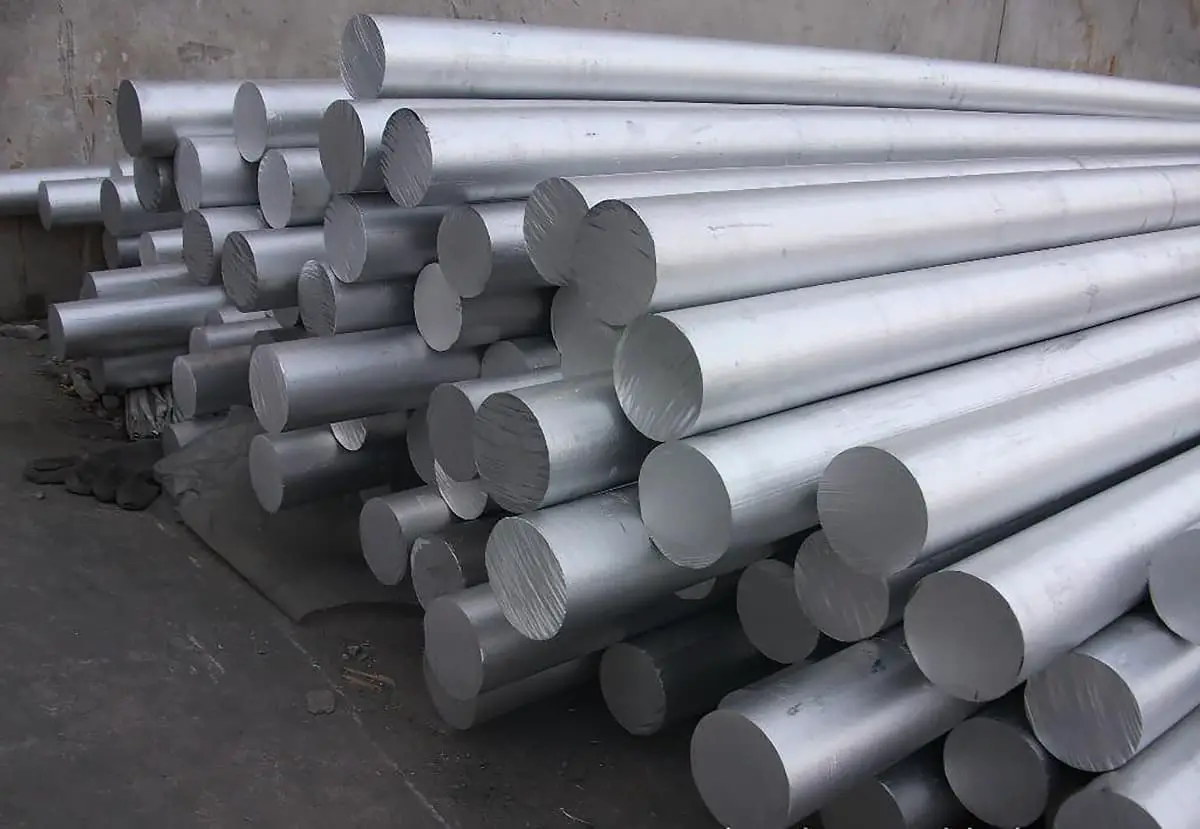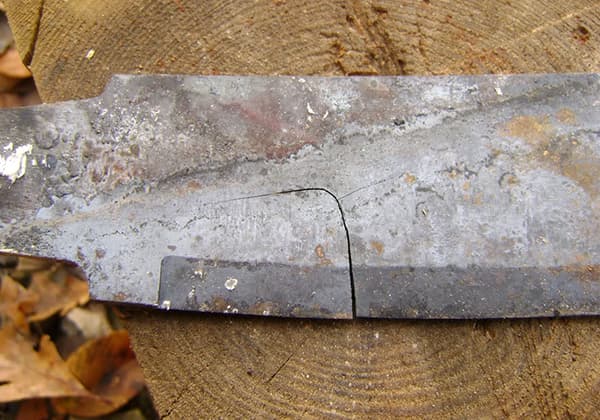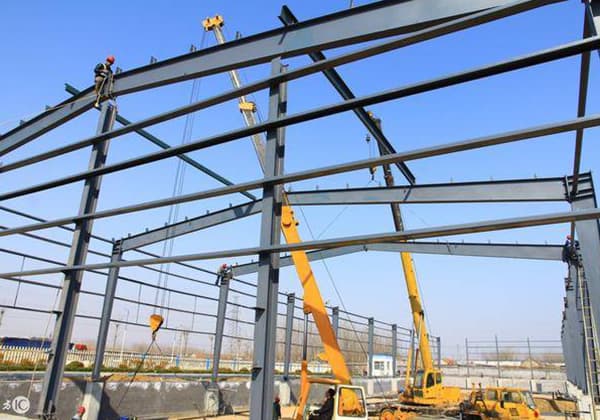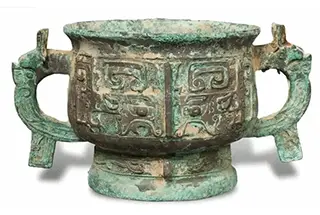Currently, aluminum is the most widely used material for electronic heat sinks. Its characteristics are very suitable for manufacturing heat sinks due to its good thermal conductivity, low cost, and high resistance to atmospheric corrosion.
The following introduces the properties of pure aluminum and aluminum alloys used in the heat sink industry, providing a deeper understanding of aluminum and aluminum alloys.

1. Pure Aluminum
Density:
Aluminum is a very lightweight metal with a density of 2.72 g/cm³, about one-third that of pure copper.
Electrical and Thermal Conductivity:
Aluminum has excellent electrical and thermal conductivity. When the cross-sectional area and length of aluminum are the same as copper, the electrical conductivity of aluminum is about 61% of copper.
If the weight of aluminum is the same as copper but the cross-sectional area is different (with equal length), the electrical conductivity of aluminum is 200% that of copper.
Chemical Properties:
It has good resistance to atmospheric corrosion due to the formation of a dense aluminum oxide film on its surface, which prevents further oxidation of the internal metal. Aluminum does not react with concentrated nitric acid, organic acids, or food.
Structure:
Aluminum has a face-centred cubic structure. Industrial pure aluminum has extremely high plasticity (ψ=80%) and can easily withstand various forming processes.
However, its strength is too low (σb is about 69 MPa), so pure aluminum can only be used as a structural material after being strengthened by cold deformation or alloying.
Other properties:
Aluminum is non-magnetic, spark-free material, and has good reflective properties. It can reflect both visible light and ultraviolet light.
Impurities in aluminum include silicon and iron. The higher the impurity content, the lower the electrical conductivity, corrosion resistance, and plasticity.

2. Aluminum Alloys
By adding appropriate alloy elements to aluminum and then cold working or heat treating it, certain properties can be greatly improved.
The most commonly used alloy elements in aluminum are copper, magnesium, silicon, manganese, and zinc.
These elements are sometimes added alone or in combination, and sometimes trace amounts of titanium, boron, chromium, and other elements are also added.
According to the composition and production process characteristics of aluminum alloys, they can be divided into two categories: cast aluminum alloys and wrought aluminum alloys.
Wrought aluminum alloys: This type of aluminum alloy is usually processed through hot or cold pressure, such as rolling, extrusion, etc., to produce sheets, pipes, rods, and various profiles. This type of alloy requires relatively high plasticity, so the alloy content is relatively low.
Cast aluminum alloys are directly poured into sand molds to make parts with complex shapes. This type of alloy requires good castability, that is, good fluidity. When the alloy content is low, it is suitable for making wrought aluminum alloys, and when the alloy content is high, it is suitable for making cast aluminum alloys.
The elastic modulus of aluminum alloys is small, only about 1/3 of steel, that is, under the same load and cross-section, the elastic deformation of aluminum alloys is three times that of steel. Although their strength is not high, they have good seismic performance.
The hardness range of aluminum alloys (including annealing and aging hardening states) is 20-120 HB. The hardest aluminum alloy is softer than steel.
The ultimate tensile strength of aluminum alloys ranges from 90 MPa (pure aluminum) to 600 MPa (super-hard aluminum), which is significantly lower than that of steel.
The melting point of aluminum alloys is lower (generally around 600°C, while steel is around 1450°C).
Aluminum alloys have excellent plasticity at both room temperature and high temperature and can be used to produce structural parts with extremely complex cross-sectional shapes, thin walls, and high dimensional accuracy using extrusion methods.
In addition to suitable mechanical properties, aluminum alloys also have excellent corrosion resistance, thermal and electrical conductivity, and reflectivity.
3. Glossary:
σb: Tensile strength (strength limit) is the maximum stress equivalent to the maximum load that the specimen can withstand divided by the original cross-sectional area before breaking.
ψ: Reduction of area is the relative shrinkage value of the cross-sectional area of the specimen after fracture, equal to the absolute shrinkage of the cross-sectional area divided by the original area of the specimen.
Plasticity: The ability of a metal to undergo plastic deformation (i.e., residual deformation) before breaking.
4. International naming system for aluminum and aluminum alloys:
1. Pure aluminum (aluminum content not less than 99.00%): 1XXX
2. Alloy groups are divided according to the following main alloying elements:
- Cu (copper): 2XXX
- Mn (manganese): 3XXX
- Si (silicon): 4XXX
- Mg (magnesium): 5XXX
- Mg+Si (magnesium + silicon): 6XXX
- Zn (zinc): 7XXX
- Other elements: 8XXX
- Reserved: 9XXX
The 1XXX group represents pure aluminum (with an aluminum content of not less than 99.00%), and the last two digits represent the minimum aluminum percentage, with the decimal places after the two digits.
The second digit in the alloy designation indicates the control status of the impurity or alloying element limits. If the second digit is 0, it means that there is no special control for the impurity limit. If it is 1-9, it means that there is a special control for one or more individual impurities or alloying element limits.
The last two digits in the 2XXX-8XXX designations have no special meaning and are only used to distinguish different alloys within the same group. The second digit represents the temper status. If the second digit is 0, it means the original alloy. If it is 1-9, it means the modified alloy.
6063-T5 Aluminum Composition Standard Content Table:
Note: Content is shown in percentage (%).
| Component | Si | Fe | Cu | Mn | Mg | Zn | Cr | Ti |
| Standard Content | 0.2~0.6 | ≤0.35 | ≤0.1 | ≤0.1 | 0.45~0.9 | ≤0.1 | ≤0.1 | ≤0.1 |

5. The meaning of the codes for aluminum alloys in China:
- L: Aluminum
- LF: Anti-rust aluminum alloy (Al-Mg, Al-Mn)
- LY: Hard aluminum alloy (Al-Cu-Mg)
- LC: Super-hard aluminum alloy (Al-Cu-Mg-Zn)
- LD: Forged aluminum alloy (Al-Mg-Si & Cu-Mg-Si)
- LT: Special aluminum alloy
6. Practical applications:
Currently, the following aluminum alloys are mainly used in the radiator industry:
1. Al6063/Al6061: Excellent plasticity makes it suitable for extrusion process to manufacture profile radiators. It can almost produce any shape of radiator, with mature technology, low price, and high machinability.
2. Cast aluminum: Mainly used for large irregular-shaped radiators and integrated radiators for equipment cabinets.
3. LF/LY series: Mainly used in electronic device radiators under special operating conditions. The operating environment has certain requirements for hardness and corrosion resistance. LY12 is currently widely used.
7. Heat treatment process for aluminum alloys:
Principles of heat treatment for aluminum alloys
Heat treatment for aluminum alloy castings involves selecting a specific heat treatment specification, controlling the heating rate to reach a certain temperature, maintaining it for a certain amount of time, and then cooling it at a certain rate to change the alloy’s structure.
Its main purpose is to improve the alloy’s mechanical properties, enhance its corrosion resistance, improve its processing performance, and achieve dimensional stability.
7.1.1 Characteristics of heat treatment for aluminum alloys
As we all know, for high-carbon steel, it immediately obtains high hardness after quenching, but its plasticity is very low.
However, this is not the case for aluminum alloys. After quenching, the strength and hardness of aluminum alloys do not immediately increase, and their plasticity even increases instead of decreasing.
However, the strength and hardness of the quenched alloy will significantly increase, while the plasticity will decrease after being left for a period (such as 4-6 days).
This phenomenon where the strength and hardness of quenched aluminum alloys significantly increase over time is called aging.
Aging can occur at room temperature, which is called natural aging, or it can occur within a certain temperature range above room temperature (such as 100-200℃), which is called artificial aging.
7.1.2 Principles of age hardening for aluminum alloys
Age hardening of aluminum alloys is a complex process, which not only depends on the alloy’s composition and aging process but also on any defects caused by shrinkage during production, especially the number and distribution of vacancies and dislocations. It is generally believed that age hardening is the result of solute atoms aggregating to form a hardening zone.
When aluminum alloys are quenched and heated, voids are formed in the alloy. During quenching, these voids do not have enough time to move out due to fast cooling, so they become “fixed” in the crystal.
Most of these vacancies in the supersaturated solid solution combine with solute atoms. Since the supersaturated solid solution is in an unstable state, it will inevitably change towards equilibrium.
The existence of voids accelerates the diffusion rate of solute atoms, thus accelerating the aggregation of solute atoms.
The size and number of hardening zones depend on the quenching temperature and quenching cooling rate.
The higher the quenching temperature, the higher the void concentration, the more hardening zones and the smaller their size.
The faster the quenching cooling rate, the more fixed voids in the solid solution, which is beneficial to increase the number of hardening zones and reduce their size.
A fundamental feature of precipitation-hardened alloy systems is the equilibrium solubility that changes with temperature, that is, the solubility increases as temperature increases.
Most aluminum alloys that can be heat-treated for strengthening meet this condition.
The solubility-temperature relationship required for precipitation hardening can be explained by the Al-4Cu alloy of the aluminum-copper system.
Figure 3-1 shows the binary phase diagram of the aluminum-rich part of the aluminum-copper system. The eutectic transformation L→α+θ (Al2Cu) occurs at 548℃.
The maximum solubility of copper in the α phase is 5.65% (548℃), and the solubility decreases sharply with decreasing temperature, to about 0.05% at room temperature.
During the aging heat treatment process, the alloy undergoes several changes in its structure, including the following:
7.1.2.1 Formation of solute atom aggregation zones – G•(Ⅰ) zones
In the newly quenched supersaturated solid solution, the distribution of copper atoms in the aluminum lattice is random and disordered.
In the early stage of aging, that is, when the aging temperature is low or the aging time is short, copper atoms aggregate on certain crystal faces of the aluminum matrix to form solute atom aggregation zones called G•(Ⅰ) zones.
The G•(Ⅰ) zones maintain a coherent relationship with the matrix α, and these aggregates constitute coherent strain regions that improve the resistance to deformation, thus increasing the alloy’s strength and hardness.
7.1.2.2 Orderly arrangement of G• zones – formation of G•(Ⅱ) zones
As the aging temperature increases or the aging time extends, copper atoms continue to aggregate and become ordered, forming G•P(Ⅱ) zones.
These zones still maintain a coherent relationship with the matrix α, but they are larger than the G•P(Ⅰ) zones.
They can be regarded as intermediate transition phases and are often represented by θ”.
They have greater distortion than the surrounding G•P(Ⅰ) zones, which further impedes the movement of dislocations, making the aging strengthening effect stronger.
The precipitation of the θ” phase is the stage at which the alloy reaches its maximum strengthening.
7.1.2.3 Formation of the transitional phase θ′
With the further development of the aging process, copper atoms continue to aggregate in the G•P(Ⅱ) zones, forming the transitional phase θ′ when the ratio of copper atoms to aluminum atoms becomes 1:2.
As the lattice constant of θ′ changes greatly, its coherent relationship with the matrix begins to break down when it forms, that is, it changes from complete coherence to partial coherence with the matrix.
Therefore, the coherent distortion around the θ′ phase weakens, and the hindering effect on dislocation movement also decreases, resulting in a decrease in the alloy’s hardness.
It can be seen that the existence of coherent distortion is an important factor causing aging strengthening in alloys.
7.1.2.4 Formation of stable θ phase
The transitional phase completely precipitates from the aluminum-based solid solution, forming an independent stable phase Al2Cu with a clear interface with the matrix, called the θ phase.
At this time, the coherent relationship between the θ phase and the matrix is completely broken, and it has its own independent lattice, and its distortion disappears.
With the increase of aging temperature or extension of aging time, the particles of the θ phase aggregate and grow longer, and the strength and hardness of the alloy further decrease. The alloy softens and becomes “over-aged.” The θ phase aggregates and grows thicker.
The aging principles and general rules of aluminum-copper binary alloys also apply to other industrial aluminum alloys.
However, the types of alloys, the formed G•P zones, transitional phases, and finally precipitated stable phases are all different, leading to different aging strengthening effects.
Even for the same alloy, the aging process may not entirely follow each stage sequentially, for example, some alloys stop at the G•P(Ⅰ) to G•P(Ⅱ) zones during natural aging.
During artificial aging, if the aging temperature is too high, the alloy can directly precipitate the transitional phase from the supersaturated solid solution without going through the G•P zone. The degree of aging directly affects the structure and properties of the alloy after aging.
7.1.3 Factors affecting aging
7.1.3.1 The influence of the time between quenching and artificial aging
Studies have found that some aluminum alloys, such as Al-Mg-Si alloys, cannot achieve their maximum strength after artificial aging if they are allowed to stay at room temperature before artificial aging. Instead, their ductility increases.
For example, for the ZL101 cast aluminum alloy, if it is left at room temperature for one day after quenching and then aged artificially, the ultimate strength will be 10-20 Mpa lower than when immediately aged after quenching, but its ductility will increase compared to the latter.
7.1.3.2 The influence of alloy chemical composition
Whether an alloy can be strengthened by aging depends first on whether the elements that make up the alloy can dissolve into the solid solution and the extent to which the solid solubility changes with temperature.
For example, the solid solubility of silicon and manganese in aluminum is relatively small, and it does not vary greatly with temperature, while magnesium and zinc have a relatively large solid solubility in the aluminum-based solid solution, but the structures of the compounds they form with aluminum are not very different from the matrix, resulting in minimal strengthening effects.
Therefore, binary aluminum-silicon, aluminum-manganese, aluminum-magnesium, and aluminum-zinc alloys are usually not subjected to aging strengthening treatment.
Some binary alloys, such as aluminum-copper alloys, and ternary or multicomponent alloys, such as aluminum-magnesium-silicon and aluminum-copper-magnesium-silicon alloys, have solubility and solid-state phase transitions during heat treatment and can be strengthened through heat treatment.
7.1.3.3 The influence of alloy solid solution processing technology
To obtain good aging strengthening effects, under the conditions of avoiding overheating, burning, and grain growth, higher quenching heating temperatures and longer holding times are favorable for obtaining a uniformly supersaturated solid solution with maximum supersaturation.
In addition, when quenched, cooling should not result in the precipitation of the second phase; otherwise, during subsequent aging treatments, the already precipitated phase will act as nuclei, causing local non-uniform precipitation and reducing the aging strengthening effect.
8. Pure Aluminum
Pure aluminum is mostly used in environments that require high thermal conductivity, but overall, it is not widely used. AL6061 alloy aluminum has several states: O, T4, T6, T451, T651, T6510, T6511.
Typical applications include industrial structural components that require a certain level of strength, high weldability, and corrosion resistance. These components are used to manufacture trucks, tower buildings, ships, trams, railway vehicles, furniture, bars, tubes, and profiles with good anodizing properties.
AL6063 alloy aluminum has several states: O, T4, T83, T1, T5, T6. It is typically used as extruded material for building profiles, irrigation pipes, frames for vehicles, furniture, elevators, fences, and decorative components of different colors for aircraft, ships, light industry, and buildings.
In terms of extruded materials, 6063 is undoubtedly the best choice. It has better polishing and anodizing properties than 6061 after extrusion.
6061 is a material with similar properties to 6063 but belongs to a structural component material. Its characteristics include good weldability, corrosion resistance, and structural strength, but there are still minor differences between 6061 and 6063. Its extrusion performance is inferior to that of 6063.


